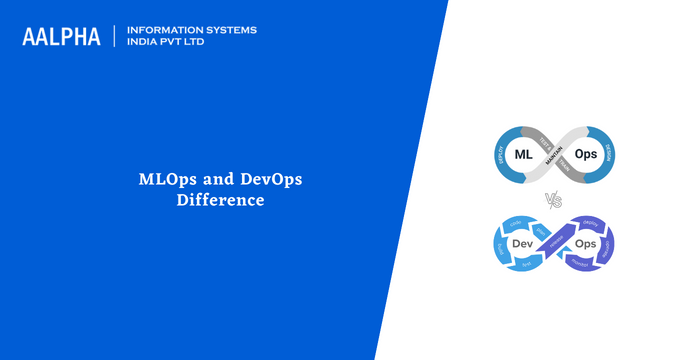Machine learning is a concept that almost all IT professionals are familiar with, but it’s no longer simply a buzzword used in flashy presentations. As machine learning has become more practical and less theoretical, the industry has begun to use it in significant initiatives.
We have passed the stage of establishing its worth by 2024. Now, the question is how to construct a good machine learning project reliably and put it into production.
DevOps and MLOps
DevOps is a collection of processes that tries to reduce the development life cycle of a system and enable continuous delivery of high-quality software. MLOps is the automation of machine learning applications and processes. DevOps and MLOps strive to put software in a repeatable and fault-tolerant process, but MLOps adds a machine learning component to the software.
MLOps is a DevOps subclass that specializes in machine learning applications and projects.
What is the optimum DevOps cycle?
DevOps is a key idea in nearly all successful IT projects as teams strive for a quicker code-build-deploy cycle. This gives teams the flexibility to release new features quicker, allowing them to complete projects faster with a higher quality final result. Without DevOps techniques, however, teams endure laborious duties, an inability to test, and, eventually, dangerous production deployments.
An ideal DevOps cycle for a successful DevOps project will consist of the following five pillars:
- Reduce organizational silos: Share responsibility and ownership
- Accept failure as usual: Embrace risk and incremental growth.
- Implement gradual changes: Reduce the cost of loss by scurrying in modest increments.
- Utilize automation and tools: Use tools to automate manual activities.
- Calculate everything: Define “success” and how it will be judged.
Comparative Analysis of DevOps and MLOps
-
Cycle
DevOps and MLOps pipelines both have a code-validate-deploy cycle. However, the MLOps pipeline includes extra data and model stages to construct/train a machine learning model (see diagram below). Consequently, MLOps differs from conventional DevOps in a few subtle ways for each process component.
Although “data” and “model” are vague, they often refer to data labelling, data transformation/feature engineering, and algorithm selection processes.
Today, algorithms in the majority of industrial machine-learning initiatives are supervised. This indicates they have a goal (or label) to learn from during model training. Data labelling is adding the target to a collection of data records, which will then be used as the training set for the model.
For models to deliver meaningful results, data transformation and feature engineering are required. The method used depends on the nature of the prediction issue.
-
Architecture and CI/CD
Each notion has two distinct interpretations for “development.”
On the conventional DevOps side, code often generates an application or interface. The code is then packaged as an executable (artefact), deployed and tested against several tests. This cycle should ideally be automated and continue until a final product is produced.
In contrast, with MLOps, the code builds and trains a machine-learning model. The output artefact, in this case, is a serialized file that may receive input and generate conclusions. Validation would include determining how well the trained model performs on test data. Similarly, this cycle continues until the model’s performance reaches a certain threshold.
-
Version Control
Typically, version control in a DevOps pipeline is limited to tracking changes to code and artefacts. There are other things to monitor in an MLOps pipeline.
As previously stated, model development and training entail an ongoing cycle of experimentation. Each experimental run’s components and metrics must be recorded to be recreated later for auditing reasons. These elements include the training data set (train/test split), the model construction code, and the model artefact. The metrics consist of the model’s hyper-parameters and performance (e.g., error rate).
Compared to conventional software programmes, this may seem to be a large number of details to monitor. Model registry tools are available as a custom solution for versioning ML models.
-
Monitoring
In MLOps, model drift is an extra component to monitor in addition to the programme itself. The dynamic nature of data necessitates that your model is involved as well. Models trained on older data may not perform well on future data, mainly if the data exhibits seasonality.
To maintain the accuracy of your model, it will need to be retrained regularly.
Responsibilities of Team Members
The roles and duties of conventional DevOps and MLOps vary somewhat. Software engineers are responsible for coding in DevOps, whereas DevOps engineers concentrate on deployment and creating a CI/CD pipeline. In MLOps, data scientists fulfil the role of application developers by writing the code for model construction. The deployment and monitoring of these models in production is the responsibility of MLOps engineers (or machine learning engineers).
Essential Distinctions Between DevOps and MLOps
MLOps is not exactly a groundbreaking concept. MLOps is a particular application of DevOps; it is DevOps for machine learning pipelines and projects. If you are familiar with DevOps, you will be able to grasp the ideas of MLOps.
For more information connecting with DevOps consulting company today!
Also read: MLOps vs AIOps
